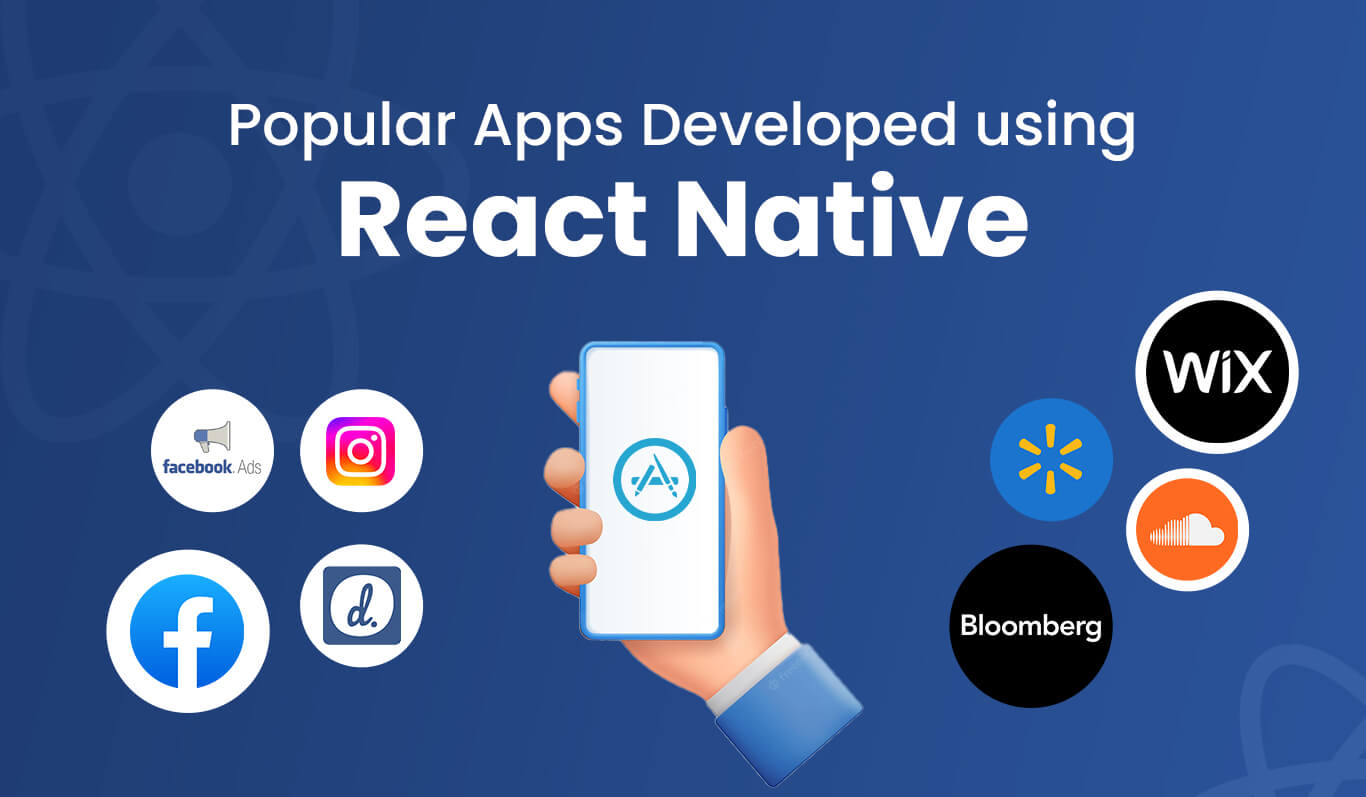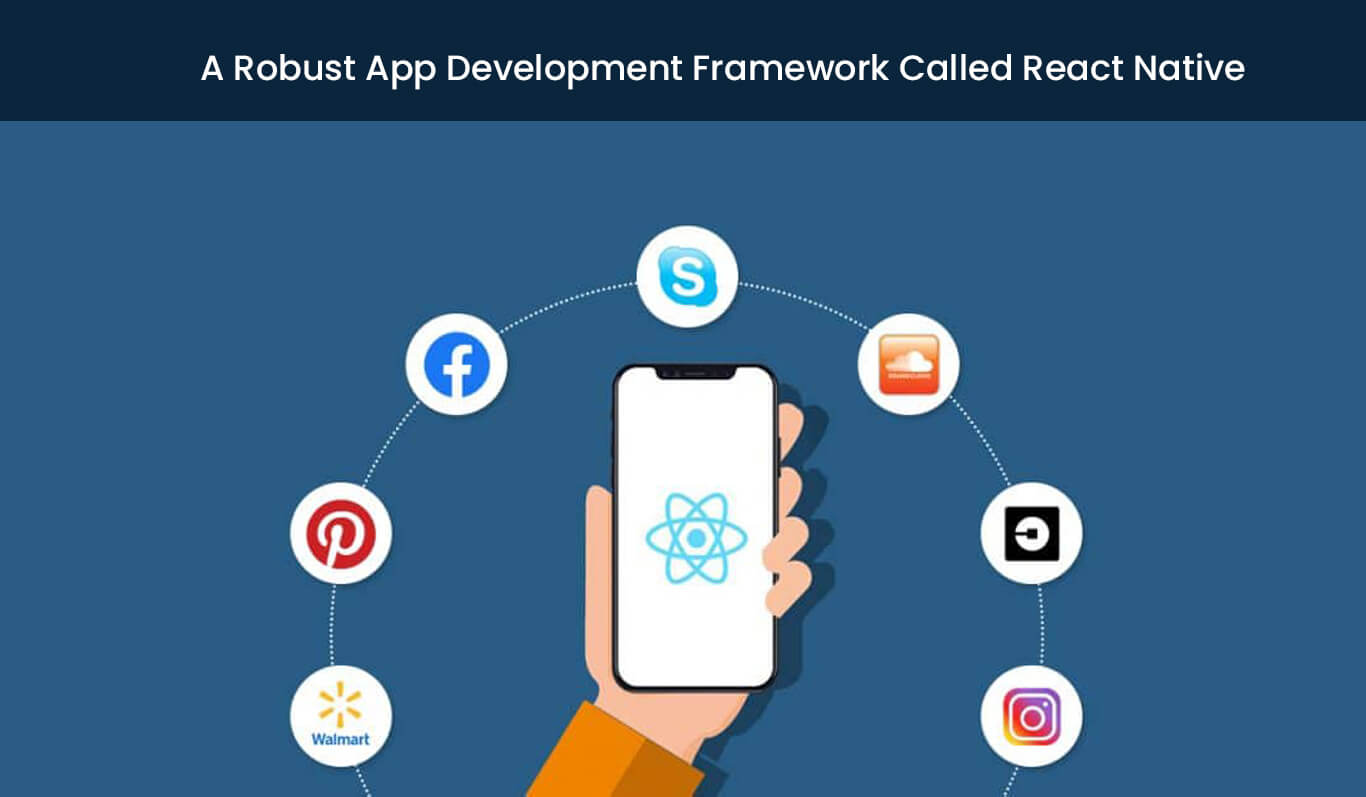The Most Popular Apps Developed Using React Native

React Native is a very popular framework. Both startups and established companies use this JavaScript framework to develop native-feel applications. Based on Facebook's React JavaScript toolkit, it extends the platform's capabilities.
As a result, it meets the demands of the mobile app development industry today. With only two operating systems dominating the scene, businesses that develop mobile apps often have to choose between two options:
- Improve user experience by developing better apps
- Create easier-to-develop, more versatile apps.
It's here that React Native comes in handy.
With React Native, most code can be reused across different platforms, making it faster to build apps. Both developers and users appreciate how the framework lets apps achieve 60 frames per second and look and feel native. There's no surprise that React Native is popular with many companies when it comes to developing mobile apps.
Top React Native Applications
Take a look at who chose React Native for app development and what they achieved.
The Native project was born out of a Facebook hackathon to meet the company's needs. By bringing all the advantages of web development to mobile devices, Facebook was able to:
- Iterations at a rapid pace
- An integrated team is responsible for developing the entire product
Hence, React Native was created for both iOS and Android application development.
Initial versions of React Native were only available for iOS. With the addition of the Android operating system, the library can now create UIs for both platforms.
An app built using React Native shows the following results:
- There was a significant increase in Facebook's performance. The Events Dashboard now takes half the time to launch.
- Most of the advancements occurred at the framework level, so updating your React Native app to the latest version will bring you benefits.
Facebook Ads
React Native was used in the development of Facebook's Ads Manager app, which is available on iOS and Android. Both versions were programmed by the same team of programmers. This was the company's first Android React Native app, along with its first cross-platform React Native app.
As a major part of the framework was already written in JavaScript, it seemed ideal for handling complex business logic. It could handle differences in ad formats, time zones, currencies, date formats, currency norms, etc. User experience is intuitive, with a clean and basic interface with smooth animations and transitions that don't feel forced.
An app built using React Native shows the following results:
- From monitoring the progress of an existing campaign to creating a new one, moving to the next level or gaining access to data is effortless with the software.
Skype
Skype announced in 2017 that it was developing a brand new application using React Native. An entirely new design has been implemented in the new application. All users could benefit from this information, since the software had a number of flaws, despite being well designed.
An app built using React Native shows the following results:
- There are a few new features thrown into the new version, in addition to a complete redesign of the icons and layout.
- Aside from the Windows desktop app, Microsoft also uses React Native on mobile devices.
- React Native plugins for Universal Windows Platforms have been developed by Microsoft under its control.
Walmart
With the inclusion of Node.js in its stack, Walmart has already demonstrated its ability to think outside the box. Later, they rewrote their mobile app with React Native. Currently, Walmart is on track to become the world's largest online retailer. Obtaining a competitive advantage requires the corporation to take calculated risks. Experimenting with new technology is part of their continuous effort to enhance the consumer experience.
An app built using React Native shows the following results:
- Walmart increased the speed of its iOS and Android apps by using fewer resources and reducing their time.
- Most of the codebase was shared between platforms, and engineers' skills were pooled. Airbnb
The Airbnb mobile app was also initially built using React Native. They found integrating with existing native apps costly at first, but eventually it paid off. Despite its simplicity, React Native poses some challenges. State management in a React app was a challenge for people new to React, which became a critical problem.
An app built using React Native shows the following results:
- Reusability of code was the biggest benefit. Almost all of the components are reusable. React also made rewriting and iterating code easy.
Airbnb later shifted to a native platform. Using React Native was regarded as a positive experience by engineers.
Uber Eats
The Uber Eats app is a famous example of an app built with React Native. It differs from the standard Uber application. Uber Eats involves three key players: restaurants, eaters, and delivery partners. A business model like this requires a separate dashboard for restaurants. In the original version, native device functionality was limited as it was designed for the web. React Native was chosen by the development team for the whole dashboard redesign. Despite being only a small part of the Uber Eats technology stack, developers were excited about its potential and ability to help meet market demands.
An app built using React Native shows the following results:
- To support the shift to the native environment, they built a robust mobile infrastructure. It also combines mobile and web development, so Uber could write native features and JavaScript features through it.
React Native is also used by Instagram, one of the most popular social networking apps. It was announced in 2016 that Instagram would switch to React Native. As a start, they used the simplest view possible - Push Notifications, which was implemented as a WebView. With the app's simple UI, no navigation infrastructure was required. It enhanced developer velocity by 85-99% by enabling product teams to ship features to Android and iOS apps much faster.
An app built using React Native shows the following results:
- In most cases, Android and iOS apps share 85 to 99 percent of their code.
- Thus, the app was delivered considerably faster than if it had been a native application.
Wix
It offers web hosting and website design services online. Creating HTML5/CSS and mobile websites is easy with drag-and-drop tools. Wix has a number of popular features, including web applications that developers can create to sell to other users.
It was important for the organization to have a flexible navigation structure and a codebase that was well-maintained and kept up to date. That's why they created the Wix-react-native-navigation system.
An app built using React Native shows the following results:
- The React Native framework allows Wix to deliver native results while speeding up web app development.
Tesla
A big name in electric vehicles, Tesla, has also joined React Native. With Facebook's trending structure, the company created an app aimed at electric cars and Powerwall batteries owners. By using a smartphone, the app can diagnose, identify, and partly control vehicles. While Tesla hasn't revealed much about the project, users have largely praised it.
A Robust App Development Framework Called React Native

It's also popular among small businesses, even if the list above only includes apps created by big corporations. The framework can benefit any company and make a lot of things easier. What are the benefits of using React Native?
It's got a lot of features other frameworks don't have. Here's what you can get from it.
- Compatible with multiple platforms
React Native has the advantage of using a single codebase, so cross-platform apps perform like native ones. Using React Native, you can build apps that run on both iOS and Android and use React JS with native UI libraries. In this way, we can re-use the component logic, state management, and React hooks for a better mobile application that has all the native features. By doing so, you can reduce development time and costs for the overall app.
- A reusable code base and pre-built components
With cross-platform mobile development, your code can be reused on Android and iOS. React Native also follows this principle. The concept is "write once, launch everywhere." It makes life easier for developers. Platform-specific designs are not necessary. An existing web app can also be converted into a mobile app by using most of its code.
- Language familiarity when coding
Developers who are familiar with JavaScript don't need to learn another language to code with React Native. If a developer knows JavaScript, React Native is easy to learn. Having a good understanding of which web components correspond to which mobile components is critical. You can now start developing your mobile app using React Native.
- Reliable
React Native was tested on mobile devices before Facebook launched it. This allowed their developers to build an amazing social media mobile app. With Facebook's mobile app, users get the feeling of using a native app. With React Native now open-source, more companies are using it to develop mobile apps.
- Build high-performing, stable applications
The React Native codebase uses a simplified binding strategy. In order to change one object, you have to modify its state before updating it. With this method, you can develop cross-platform applications that are more stable and reliable.
While React Native is a great option for developing a new app from scratch, it also works well when adding a single view to an existing application. It's easy to add new React Native features, views, screens, etc. In addition, React Native renders code using platform-specific APIs rather than WebView. This results in better-performing applications.
- Integration of third-party plugins
The React Native framework supports third-party plugins. There are two types of plugins to choose from: Native Modules and JavaScript Modules. As an example, if you want to add Google Calendar or Google Maps to your app, you can do so through React Native.
- Industry popularity and community support
As a cross-platform solution, React Native has the strongest community support. Using React Native, you can get community support for your developers. With the help of Facebook, as well as many companies and open-source contributors, React Native app development will remain relevant for many years to come.
- Hot and Live Reloading
React Native's core features include hot and live reloading. By using this feature, developers can work with the code changes in real-time while the application is loading.
Hot reloading reloads only the changed area, whereas live reloading automatically reloads the entire application. In this way, the process of development and testing is streamlined.
- UI with rich features
By using declarative components, such as Button, Picker, Slider, Switch, you can create compelling UIs. You can create your own components using TouchableNativeFeedback and TouchableOpacity. The application also comes with many Android and iOS-specific components.
- Real-time updates
You can release updates without using the app stores since JavaScript is the main language. With tools like code push, it can launch updates in an instant on a user's device.
- Hire React Native developers easily
A major part of the React Native platform is the open-source JS library. So, finding and hiring developers for your project shouldn't be too difficult. It is also easy to learn React Native, so your developers will find it easy to use. With our team of highly competent React Native developers, many businesses have been able to build unique mobile applications.
Conclusion
As you can see, React Native is popular across industries for mobile apps. By eliminating two separate development teams, this leads to a more cost-effective, faster development process. Are you looking to hire React Native developers?
No matter what you're thinking of, we've got a team of experienced React Native developers that can help you make your idea a reality.
Our promise to you when you work with the best React Native app development company Neetable is:
- Developers with experience and expertise in React Native
- A one-stop shop for technology consultation, development, and maintenance Do you have any questions? Get started now by contacting us.
FAQs
Is React Native a good choice?
By using React Native, you will be able to save on development costs while still having native performance and a flexible user experience. In addition to its many advantages, it has a great number of "ready-to-go" templates, an army of dedicated contributors, and a large following.
Why is React Native so popular?
The React Native framework allows developers to reuse code across web and mobile platforms, as well as to build iOS and Android apps with the same code. It's a huge advantage for developers.
Who are the main competitors of React Native?
React Native has many competitors, including Flutter, Swift, Xamarin, NativeScript, and React.
Request a Quote
Categories
Popular posts
Best Practices for Software Product Engineering Every CTO Should Implement
2023-14-18How to Build Your Own On-Demand Carpooling App Services?
2023-08-25How to Start an On-Demand Fuel Delivery Business: A Comprehensive Guide
2023-07-28Empowering Miners: How Fleet Management Apps are Transforming the Mining Industry?
2023-07-21A Complete Guide to Develop a Food Delivery App for Restaurants in 2023
2023-07-08Mobile Apps Transforming the Travel Industry: A Game-Changer in Travel Planning and Experience
2023-07-07
